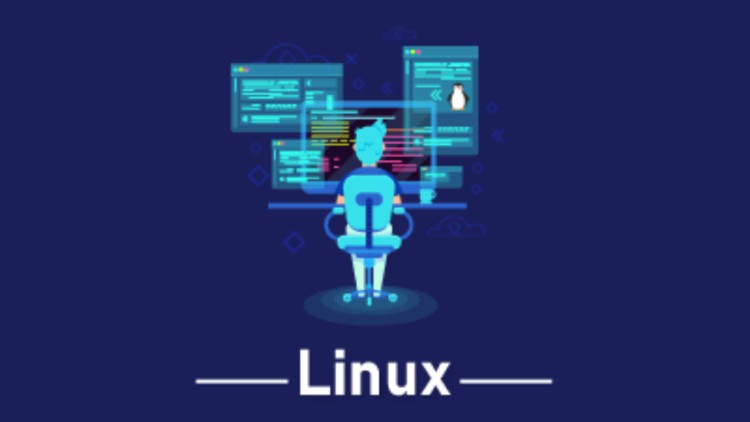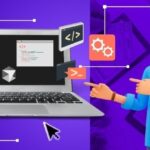
Study Linux Administration, Linux Command Line & turn out to be a Linux System Administrator with simply this ONE course.
What you’ll be taught
By the top of this course you can be an expert in Linux administration and be capable to apply for Linux jobs
You’ll have strong Linux expertise and have nice understanding of Linux ideas and fundamentals
You’ll grasp all the essential Linux instructions
Purchase the technical experience to work on the Linux command line
It is possible for you to to troubleshoot day-to-day Linux associated points
You’ll achieve advance Linux methods administration expertise
You’ll achieve information of essentially the most used Linux instructions
Develop into an Impartial Person of the Linux Working System
Really feel comfy utilizing the command line interface
CentOS/Redhat variations 7, 8 and 9 and Rocky 8 and 9
Description
WELCOME !
Welcome to the Complete Linux Course, the one course you want to be taught all about Linux Administration, Linux Command Line and Linux normally.
The Linux working system is the most most well-liked working system within the company world and the wonderful thing about Linux is that the majority of what you’ll must be taught isn’t very tough in any respect. Linux is a key talent of IT, it gives good profession alternatives with increased salaries, it’s a free working system and by studying Linux, you should utilize this Linux information and apply it to roles like Linux System Administrator, DevOps Engineer, Cloud Architect, Community Administrator, Safety Engineer, Backend Developer, Frontend Developer, Information Scientist, and far more. So if you wish to be taught Linux and be capable to apply it in any of the roles talked about above, then this course is for you !
Course’s Purpose ?
This course will train you the Linux expertise that may allow you to begin your profession in IT in any Linux based mostly or associated job and to give you all it is advisable to apply for the job as an expert in Linux. After this course you gained’t be needing another to start out your profession and that’s as a result of this course is designed to cowl all of the Linux points wanted so that you can begin your profession in IT.
Who’re we?
We’re M Torkey and M Khalil and we’ve been working with Linux for over a decade, alongside the years we’ve labored in so many corporations as Sys Admins and DevOps Engineers and we’ve been given the chance to be taught from consultants and developed lots of expertise within the work discipline and henceforth we’d current for you what you precisely must skyrocket your probabilities of touchdown a job in IT and beginning your profession.
On this course you’ll be taught the important thing instructions, ideas and total Linux expertise that may assist get you began in your journey.
Why Linux ?
Linux tends to be extremely dependable and a safer system than another working system (OS). Linux additionally is kind of widespread amongst many corporates and plenty of think about it to be the lead working system within the company world. Listed here are 5 explanation why it’s best to begin in Linux:
- Linux Offers Good Profession Alternatives
- A lot of the infrastructure that powers the web, together with routers and servers, is predicated on Linux
- It’s Used on Practically Each Server
- Linux is one such talent that permits a person to expertise a widespread progress of their profile after studying it
- Linux is free and open supply
What shall be introduced on this course ?
The course is aimed to show Linux to novices, intermediates and even superior Linux customers who want to develop their expertise in Linux. Beginning all the way in which from the Linux fundamentals as much as tips on how to handle a whole platform.
That is the checklist of matters that I’ll cowl on this course:
Part 1 – Introduction
- Welcome !
- What’s Linux ?
- Why Linux ?
Part 2 – Put together Your Lab
- Set up VirtualBox on Home windows
- Create our first digital machine
- Add New Digital Arduous Disk
- Why Rocky Linux ? and it’s relation to centOS and RedHat
- Set up Rocky 9.0 (Redhat & CentOS suitable)
- Port Forwarding – NAT – Community concern resolution
Part 3 – Perceive & Use Important Instruments
- Accessing the Command Line
- Linux File System Hierarchy
- Create Recordsdata & Directories
- Discover Your Manner In Linux
- Copy, Transfer, Rename & Delete Recordsdata
- Copy, Transfer, Rename & Delete Directories
- Get Assist with Guide Pages
- Get Assist with Pinfo
- Learn Linux Documentation
- Use Enter & Output redirection
- Create & Edit Textual content Recordsdata
- Entry Distant Programs Utilizing SSH
- Archive, Compress, Unpack & Uncompress Recordsdata
- Create Arduous & Smooth Hyperlinks
- Discovering Recordsdata
Part 4 – Linux System Administration (Chapter 1)
- Create Native Customers & Native Teams
- Acquire Tremendous Powers
- Modify Customers, Teams & Password Ageing
- Configure A System To Use An Present Authentication Service
- Notation Permissions
- Symbolic Permissions
- Particular Permissions
Part 5 – Linux System Administration (Chapter 2)
- Monitor Working Processes with ps Command
- Run Processes within the Background
- Terminate Working Processes with Kill & Pkill
- Monitoring Working System with prime
- Itemizing Unit Recordsdata with systemctl
- Begin, Cease & Examine The standing of a Linux Service
- The Reality About System Log
- The rsyslog
- The SystemD Journal
- Boot, Reboot And Shut Down A System Usually
- Boot Programs Into Completely different Targets Manually
- Interrupt The Boot Course of To Acquire Entry To A System
- Modify Course of Precedence With Renice
Part 6 – Linux System Administration (Chapter 3)
- Analyzing the File System
- Mounting & Unmounting File System
- Create, Mount, Unmount And Use Vfat, ext4 And xfs File Programs
- Mount and Unmount CIFS and NFS Community File Programs
- Lengthen Present Logical Quantity
- Create and handle Entry Management Lists ACLs
- Keep Correct Time with ntp
- Validate Your Community Configuration
- Configure Linux Community
- Edit Community Configuration Recordsdata
- Configuring Hostnames & Names Decision
- Set up & Replace Software program with yum
- Handle RPM Packages
- Schedule Duties Utilizing at and cron
Part 7 – Linux System Administration (Chapter 4)
- Configure Key-Primarily based Authentication for SSH
- Disallow Person Root from Logging In Utilizing SSH
- Copying Recordsdata Securely Between Programs
- Synchronize Recordsdata & Folders Securely Between Programs
- Configure Firewall Settings Utilizing Firewall-config & Firewall-cmd
- Introduction To SElinux
- Listing And Determine SElinux File And Course of Context
- Restore Default File Contexts
- Use Boolean Settings To Modify System SElinux
- Diagnose And Tackle Routine SElinux Coverage Violation
Part 8 – Linux System Administration (Chapter 5)
- Configure Aggregated Community Hyperlinks Between 2 RHEL Programs or Interfaces
- Configure IPv6 Addresses and Carry out Fundamental IPv6 Troubleshooting
- Firewalld – The wealthy guidelines
- Configure Community Tackle Translation(NAT) – Masquerade
- Configure Community Tackle Translation (NAT) – Port forwarding
- Configure a system as an iSCSI goal
- Configure a system as an iSCSI initiator
- Use procsys and sysctl to Modify or Set Kernel runtime parameters
- Produce and ship reviews on system utilization(processor,reminiscence,disk,community)
Part 9 – Linux System Administration (Superior Matters)
- Set up the packages wanted to offer the service
- Configure SELinux to assist the service
- Use SELinux port labelling to permit companies to make use of non-standard ports
- Configure the service to start out when the system is booted
- Set up and Configure Apache
- Configure Apache entry restrictions on directories
- Configure Group Managed Content material
- Deploy a fundamental CGI utility
- Configure an Apache Digital Host
- Configure TLS safety
- The Apache Configuration File
- Configure a Caching-Solely Title Server
- Present community shares to particular shoppers
- Present community shares appropriate for group collaboration
- Use Kerberos to Management Entry to NFS community shares (configure Kerberos)
- Use Kerberos to Management Entry to NFS community shares ( Configure Nfs Server )
- Present Community Shares to Particular Shoppers-client set up and configuration
- Present Community Shares Appropriate for Group Collaboration
- Configure a system to ahead all emails to a central mail server
- Configure Key-Primarily based Authentication
- Configure Key-Primarily based Authentication 2
- Synchronize time utilizing different NTP friends
- Set up and Configure MariaDB
- Create a easy database schema
- Backup database
- Carry out easy SQL queries towards a database
- Restore a MariaDB database
Part 10 – Bonus 1: Safe Shell Deep Dive
- Introduction To Safe Shell
- How do I hook up with a distant host
- How do I hook up with a distant host on a distinct SSH port
- How can I login to a selected listing?
- How do I execute a command on a distant host utilizing SSH?
- How can I copy (file/recordsdata) to a distant host utilizing SCP?
- How can I copy (file/recordsdata) from a distant host utilizing SCP?
- How can I Copy whole listing utilizing SCP?
- Can I restrict the velocity (bandwidth) of recordsdata switch utilizing SCP?
- What’s SFTP and the way to hook up with SFTP?
- SFTP Listing file and test the working listing
- SFTP Importing Recordsdata
- SFTP Downloading Recordsdata
- SFTP Switching and Creating Directories
- SFTP Take away Recordsdata and Directories
- A number of SSH Classes with display screen (Set up Display screen)
- A number of SSH Classes with display screen (Begin working)
- A number of SSH Classes with display screen Lock and Exit from the display screen
- Tunneling x11 By means of SSH (Linux)
- Tunneling x11 By means of SSH (Run Linux Functions on Home windows)
- Distant Desktop with SSH (Set up and Configure VNC Server)
- Distant Desktop with SSH (Connect with Distant Desktop)
- Change The Default Port
- Disable Direct Root Entry
- Enable Entry for Sure Person(s)
- Deny Entry from Identified IPs
- Enable Entry from Identified IPs
- Public Key Authentication
- Disable Password Authentication
Part 11 – Bonus 2: Further Lectures
- Vi editor half 1
- Vi editor half 2
- Create SWAP file and SWAP partition
- Logical Quantity Administration (LVM)
- Software program RAID
- Course of Managment
- VMSTAT And IOSTAT
- Listing Open Recordsdata (LSOF)
- Tcpdump
- Seek for Recordsdata on Linux utilizing discover and find
- Cat Command
- Grep Command
- AWK Command
- HEAD Command
- Community Shoppers (ssh , Scp , Ftp ,wget)
With that there shall be 24 hour assist for any questions or strategies within the dialogue discussion board
And now after this description you have to be involved on what are you going to get out of this course by the top !
By the top of this course you’ll have the abilities that may qualify you to apply for any Linux associated job and be capable to preform in actual life conditions.
==========================================================================================
For Assurance, try what my college students truly need to say concerning the course:
“I’ve taken dozens of programs on Udemy with some actually nice content material, however this if you happen to solely take one course, that is the one to take. thanks.!!!” – Edward W. (5 Star Evaluate)
“5 Star All The Manner!!! Thanks guys you’re the finest on Udemy! Effectively defined course and simple to know in an affordable time. After finishing the primary part I’m assured that this course will present every little thing I had hoped for and extra” – canning G. (5 Star Evaluate)
“Thanks very a lot for the course! I stay up for seeing extra lectures, he didn’t waste a phrase. Purchase this course if you wish to succeed. Very comprehensible!!!” – Kaichekanchap (5 Star Evaluate)
“Superior dude!! nice stuff, extremely suggest. Merely 5 Star. Thanks for displaying us this progressive information. It was extraordinarily nicely educative” – Uppalakiran (5 Star Evaluate)
“Easy and simple!!!!!! Want I’d had entry to a category like this years in the past. The teacher are at all times right here to assist out, by no means had an issue to contact him relating to to the query within the course” – Sairepavan (5 Star Evaluate)
“I’ve received extra details about Linux, I’d strongly suggest this course to all new professionals beginning their profession as a Linux administrator” – Abhishek Kumar P. (5 Star Evaluate)
“Nice job!!! Greatest course on udemy. Easy and candy description. Anybody who wish to be taught linux can undergo it. It gave me precisely what I used to be searching for” – Nervinara (5 Star Evaluate)
Content material
Put together Your Lab
Perceive & Use Important Instruments
Handle Customers & Teams
Safe Linux Atmosphere by Understanding Recordsdata Permissions
Function Working System
Deploy, Configure & Keep Programs
Native File System
Managing Safety
Bonus
The put up The Full Linux Information – From Newbie to Superior (2025) appeared first on destinforeverything.com/cms.
Please Wait 10 Sec After Clicking the "Enroll For Free" button.








